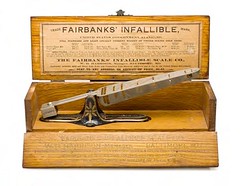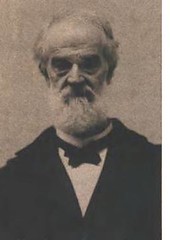
PREV ARTICLE
NEXT ARTICLE
FULL ISSUE
PREV FULL ISSUE
ANS OPENS NEW EXHIBIT ON COUNTERFEIT MONEY
Megan Fenselau of the American Numismatic Society forwarded this press release last week, but I held off publishing while I awaited some illustrations of exhinit materiasl, which were kindly furnished this week by Joanne Isaac of the ANS museum. Thanks!
-Editor
Funny Money: The Fight of the United States Secret Service against Counterfeit Money Exhibition on the United States Secret Service and counterfeit money opens in New York City, Friday April 9, 2010. The exhibition :
Often punished severely, it nevertheless continues to the present day. Organized by the American Numismatic Society, the Federal Reserve Bank and the United States Secret Service, the exhibition gives a unique insight in the workings of the Secret Service in their fight against counterfeiters. Better known today for its protection of the US President, the Secret Service was originally set up in 1865 to combat and prevent counterfeiting. The material in the exhibition, most of which has never been displayed before, illustrates the work of one of the more mysterious government agencies, which has rarely made its operations as public as in this exhibition.
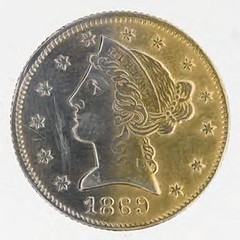
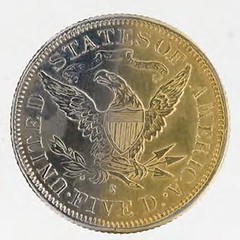
1869 Counterfeit $5 In the 1860s, over one third of all circulating currency was estimated to be counterfeit, which presented a serious threat to the economy. Within the first two decades, the Secret Service established routines for investigating counterfeiters and bringing them to justice. Newspaper reports from the period paint a vivid picture of a culture in which counterfeiters were both vilified for their crimes while being admired for their skills in producing and passing counterfeit money.
Whereas traditionally men are convicted of counterfeiting, the material shows the involvement in these operations of women, who were employed to pass fake money, supervise work or finance the purchase of equipment. The exhibition introduces the various techniques employed by counterfeiters. Until the advent of the computer and ink-jet printers, counterfeit notes were made with engraved plates on offset printing machines. Nowadays, counterfeiters often use a home-office set up to produce small batches of counterfeit money. The exhibition features a note made by Albert Talton, who was arrested in California in 2007 in one of the largest and best organized counterfeit rings. He and his team produced millions of counterfeit dollars by using equipment and supplies from Staples.

Bleached $100 note with fake watermark Thanks to the help of several retired US Secret Service agents, the exhibition is able to shed light on an investigation of the largest counterfeit ring in US history, during which 85 people were arrested in the late 1980s in Queens, New York; the gang produced $100 million of counterfeit money, which was connected to a Colombian drug operation. Surveillance photos, mugshots and other records show the painstaking work of the special agents over several years. Other parts of the exhibition illustrate the techniques of counterfeiters to produce counterfeit money as well as the new techniques of using scanners and inkjet printers. The Secret Service's operations in South America and abroad are also well illustrated, where counterfeit money often plays part in the trade of drugs and arms. The curator of the exhibition, Dr. Ute Wartenberg Kagan, explained how the exhibition looks at the people involved and what motivates them in their work, both as criminals and special agents. “Many of the counterfeiters through the ages are motivated by greed, but in almost all the stories there is an element of pride in producing a good product. On the other hand, the investigative work of the Special Agents is so much less glamorous and gets little attention.
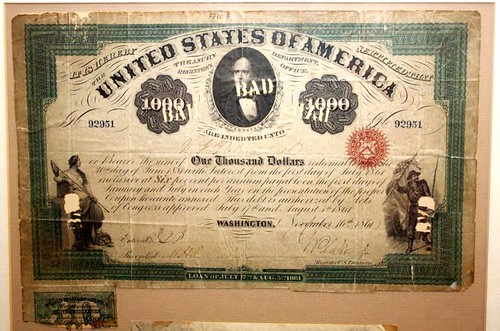
Through the exhibition you can see how some agents follow certain criminals for years, and a relationship develops. When putting together the exhibition from the photos, reports, newspaper clippings, surveillance and arrest photos, I got to know some of these criminals and Special Agents quite well, and I hope that Funny Money conveys some of this atmosphere to the visitors of the exhibition.”
The exhibition will run from 9 April until 31 December 2010.
To arrange a preview or accompanied viewing of the exhibition, or an interview with the Exhibition's curator, please contact ANS administrator Joanne Isaac Isaac@numismatics.org or
212 571 4470 x112
The Numismatic Bibliomania Society is a non-profit organization promoting numismatic literature. See our web site at coinbooks.org. To submit items for publication in The E-Sylum, write to the Editor at this address: whomren@gmail.com To subscribe go to: https://my.binhost.com/lists/listinfo/esylum All Rights Reserved. NBS Home Page Contact the NBS webmaster 
|
